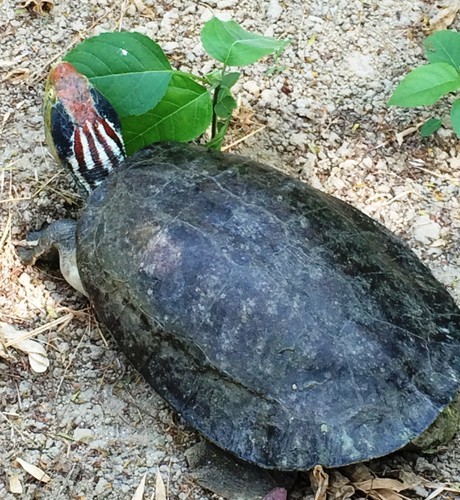Researchers observed found that the five symbols that comprise a rock art site in Iduhatty, Nilgiris district closely resemble geometric signs of Ice Age Europe.
Ochre is a natural pigment, predominantly just an iron oxide with varying degrees of water molecules, which gives different sort of colours, from yellow to black.
The European Union has proposed a policy called the Carbon Border Adjustment Mechanism which BASIC countries have opposed.
The EU is India’s second-largest trading partner after the U.S. and the second largest destination for Indian exports.
India joined the latest meeting of the ‘Moscow format consultations on Afghanistan’ held at Moscow.
CITES COP-19
The 19th Conference of the Parties (COP19) to CITES is being held in Panama.
The Convention on International Trade in Endangered Species of Wild Fauna and Flora (CITES) is also known as the Washington Convention.

Over 11,000 tortoises and freshwater turtles have been seized in India from 2009-2019, a study by TRAFFIC.
| African Elephants | Asian Elephants | |
| IUCN | Vulnerable | Endangered |
| CITES |
Appendix II (proposed to move it to Appendix I) |
Appendix I |
The Prime Minister at G20 meeting, presented artworks and traditional items representing the rich heritage of Gujarat and Himachal Pradesh to world leaders.
|
Kangra Miniature Paintings (Kangra, Himachal Pradesh)
|
|
|
Mata Ni Pachedi (Ahmedabad, Gujarat)
|
|
|
Pithora Paintings (Chhota Udaipur, Gujarat)
|
|
|
Patan Patola (scarf) (Patan, Gujarat)
|
|
|
Agate Bowl (Kutch, Gujarat)
|
|
|
Silver Bowl (Surat, Gujarat)
|
|
|
Kanal Brass Set (Mandi & Kullu, Himachal Pradesh)
|
|
|
Kinnauri Shawl (Kinnaur, Himachal Pradesh)
|
|